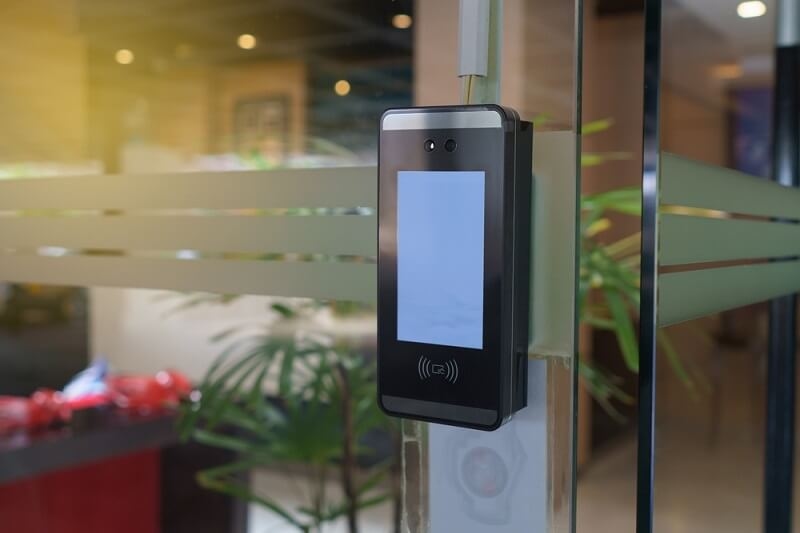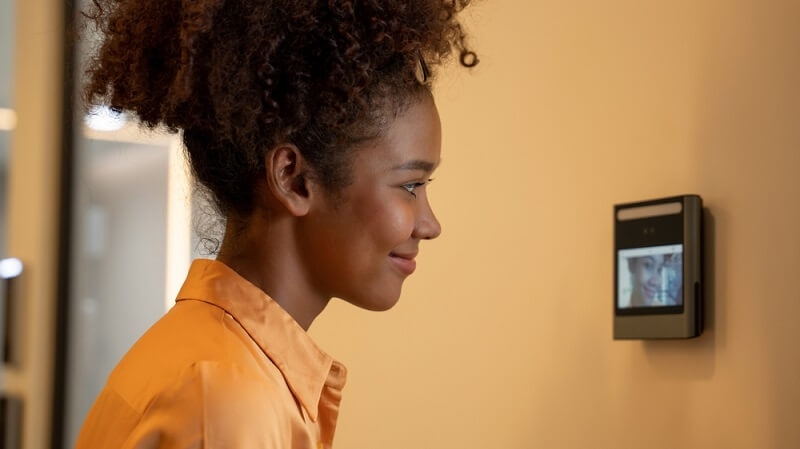Smart homes are moving from convenience to real security. The next big shift might come from Apple. Reports suggest the company is developing an Apple Face ID Doorbell, a device that uses facial recognition to identify people at your door and connect directly with Apple’s smart home ecosystem.
If this becomes reality, it could redefine how people approach smart home security. Here’s what it means, how it might work, and what homeowners should consider before bringing facial recognition to their front door.
What Is the Apple Face ID Doorbell
The Apple Face ID Doorbell is expected to work like your iPhone’s Face ID, but for your home. It would recognize your face, verify it securely through Apple’s Face ID system, and unlock your door automatically if paired with a smart lock. According to reports, Apple is testing prototypes that use its Secure Enclave chip to process facial data privately and safely.
This device would compete directly with existing smart doorbells like Amazon Ring and Google Nest. But Apple’s advantage lies in its ecosystem. If this doorbell connects seamlessly with HomeKit, your HomePod, Apple Watch, and iCloud, it will offer a smoother, more private experience than most smart doorbells available today.
Unlike typical video doorbells that focus on motion detection or notifications, the Apple Face ID Doorbell could become a full authentication tool for smart homes. It moves beyond watching who’s at the door to deciding who can enter.
More to Discover: How to Choose the Best Smart Locks For Your Home?
Smart Doorbell Installation: Getting It Right
Before anyone installs a device like this, understanding proper smart doorbell installation is crucial. A poorly installed doorbell can reduce camera clarity, weaken Wi-Fi connection, and even open up security risks.
Here’s what to keep in mind:
- Choose your power source carefully. Smart doorbells come in wired or wireless versions. Wired setups offer consistent power, while wireless ones are easier to install but need recharging.
- Find the right placement. The doorbell camera should sit roughly four feet from the ground, angled slightly toward the visitor’s face. For facial recognition, clarity and lighting matter more than ever.
- Secure your network. Strong Wi-Fi ensures clear live video and faster recognition. Always use a secure password and consider keeping smart devices on a separate network.
- Integrate with locks properly. If you plan to use a smart lock, ensure compatibility with Apple HomeKit or Matter. A smooth connection between your lock and doorbell avoids lag or failed unlocks.
- Consider professional setup. Smart doorbell installation might look simple, but correct wiring and secure pairing make a difference.
A good installation keeps your system reliable and your data safe.
Does Apple Have a Home Security System
People often ask, does Apple have a home security system? The short answer is not yet, but it’s building one step by step.
Apple currently offers HomeKit and HomeKit Secure Video, which support smart locks, lights, sensors, and cameras from third-party brands. HomeKit Secure Video stores encrypted footage in iCloud, keeping your recordings private.
However, Apple doesn’t provide a traditional monitored alarm system like ADT or Ring Alarm. Instead, it’s building a framework where devices talk to each other inside a privacy-first ecosystem. The rumored Apple Face ID Doorbell would be Apple’s first true hardware step into direct home security, beyond just managing other devices.
If Apple combines this doorbell with future smart locks or indoor sensors, it could easily evolve into a complete home security setup.
Smart Home Security Concerns to Watch For

Every connected device adds a layer of convenience, but it also brings smart home security concerns. A device that uses facial recognition raises valid questions about data privacy, accuracy, and access.
Here are a few areas to think about:
- Facial data storage. Where is your facial information stored? Apple usually processes biometric data locally on the device through Secure Enclave, but users should verify how it works with a home doorbell.
- Network exposure. Smart home devices are common entry points for hackers. Keep your doorbell updated, use strong credentials, and avoid public networks.
- Privacy for visitors. Not everyone wants to be scanned or recorded. Inform visitors or delivery people that your home uses a smart doorbell with a camera.
- Legal and ethical factors. Some states regulate facial recognition use. Always check local privacy laws before installation.
- Backup options. What if Wi-Fi goes down or the system fails to recognize you? You’ll need a backup access method, like a physical key or passcode.
Addressing these smart home security concerns early prevents problems later. Security tech only helps when it’s controlled and transparent.
Top Pick: Why People Prefer Smart Motion Detector Cameras?
How the Apple Face ID Doorbell Could Change Smart Home Security
The Apple Face ID Doorbell could make home entry as seamless as unlocking your phone. Imagine walking to your door with groceries in hand and having it unlock automatically. It’s secure, quick, and completely personalized.
Apple’s focus on privacy gives this product a clear edge. The company has always emphasized local data processing and encryption. That approach could help solve one of the biggest smart home security concerns: trust. Users already rely on Face ID to protect sensitive data on their phones. Extending that to home security feels like a natural next step.
The potential integration with other Apple devices also makes this doorbell more powerful. You could receive door alerts on your Apple Watch, review footage from your iPhone, and manage access through Siri. Everything remains inside one ecosystem.
Must Have Smart Home Devices to Pair With It
Even the best doorbell works better as part of a connected system. Here are the must have smart home devices that pair well with a Face ID-based setup:
- Smart lock. It’s essential for automating entry. Choose a HomeKit-compatible lock for full integration.
- Smart cameras. Add indoor or outdoor cameras to cover blind spots. Look for ones that use HomeKit Secure Video.
- Motion sensors. These can trigger lights or alerts when unexpected movement occurs.
- Smart lighting. Link porch or hallway lights to your doorbell activity for better visibility at night.
- Smart hub or speaker. A HomePod or Apple TV can act as a hub to manage all devices through the Home app.
Investing in these must have smart home devices helps build a complete security system rather than relying on a single gadget. The Apple Face ID Doorbell could easily become the center of that network.
Explore more: What Is a UWB Smart Lock and Why It is Safer for Families?
The Future of Smart Home Protection
Apple’s move into this space signals how personal security is changing. A smart doorbell installation isn’t just about seeing who’s at your door anymore. It’s about controlling access intelligently and safely.
When users ask, does Apple have a home security system, the real answer might soon be yes. The Apple Face ID Doorbell shows Apple’s intent to merge convenience with privacy, which is exactly what the smart home market needs right now.
Before adopting it, homeowners should evaluate their network setup, address potential smart home security concerns, and plan a proper installation. Combined with the right must have smart home devices, this technology can raise both comfort and protection levels at home.
The next era of smart home security is about recognition, not just monitoring. And Apple looks ready to lead that shift.



